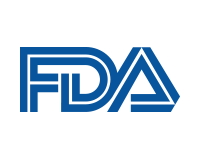United States Department of Health and Human Services

United States Food and Drug Administration: Publications
Date of this Version
2019
Document Type
Article
Citation
Addictive Behaviors 92 (2019) 128–135
https://doi.org/10.1016/j.addbeh.2018.12.005
Abstract
Purpose: We provide a US national assessment of youth perceptions of the harm and addictiveness of six separate tobacco products, identifying a continuum of perceived harm associated with a range of products in relation to patterns of current use, former use, and susceptibility to use tobacco products.
Methods: We evaluated youth respondents (N=13,651) ages 12–17 from Wave 1 (2013–2014) of the Population Assessment of Tobacco and Health (PATH) Study. Analyses (2015–2016) focused on refining mea- sures of perceived harm for each product and delineating youth characteristics (demographic, tobacco use status) associated with beliefs about the harmfulness and addictiveness of tobacco products.
Results: Cigars, hookah and e-cigarettes were each perceived as having significantly lower harm (p's < 0.05) than smokeless products, with the lowest ratings of harmfulness and addictiveness observed for hookah and e- cigarettes (p's < 0.001). Incrementally lower levels of harm and addictiveness perceptions were observed among youth at increasing risk for tobacco use (p's < 0.05).
Conclusions: Among U.S. youth, lower perceptions of harm and addictiveness of tobacco products were asso- ciated with susceptibility to use tobacco and patterns of tobacco product use. Future longitudinal assessments from the PATH Study can provide key information on youth development of perceptions of harm and addic- tiveness and influences on patterns of tobacco use.
Included in
Dietetics and Clinical Nutrition Commons, Health and Medical Administration Commons, Health Services Administration Commons, Pharmaceutical Preparations Commons, Pharmacy Administration, Policy and Regulation Commons


Comments
2019 Elsevier Ltd. All rights reserved.